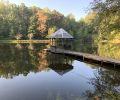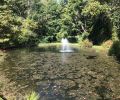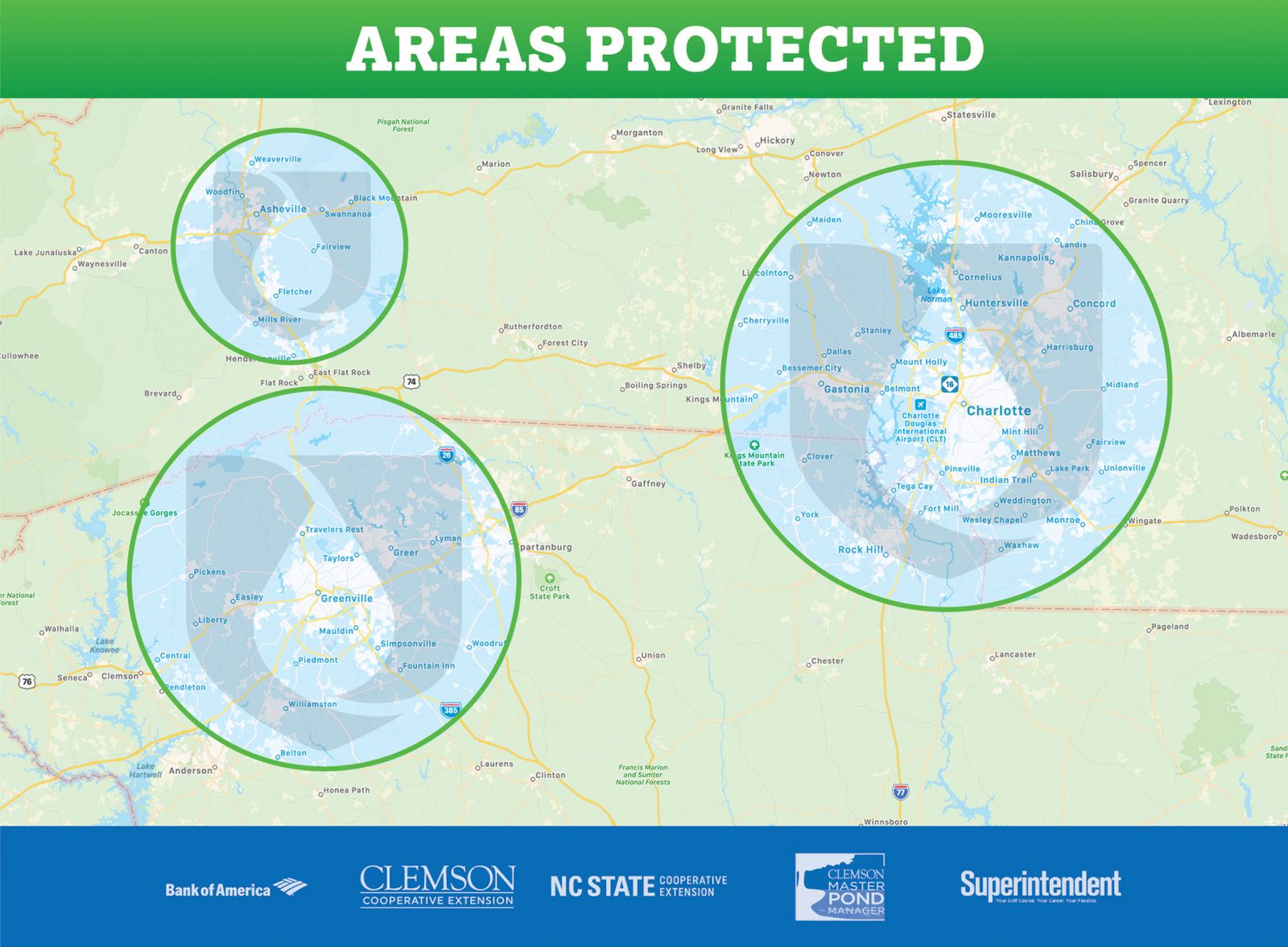James is a private pond owner. He owns a 2 acre pond in his backyard. He called and asked if copper sulfate was the best way to go regarding pond algae. He woke up with his pond covered in algae and aquatic weeds and needed to take care of it. We shared with him that it was an excellent way to kill many different strains of algae. He asked if he bought it online if he could do it himself. We explained he needed to check with codes in his state to see if was legal to apply himself. But having a professional apply the treatments would be less hassle and give him quicker results.
Depending on whether the algae is growing up from the bottom or simply floating on the top will determine what form of copper you would want to choose. Bottom algae is best treated by granular forms such as Cutrine Plus. Floating algae may need a liquid mix of copper such as Sepro’s Captian XTR or Cutrine Plus by Applied Biochemists.
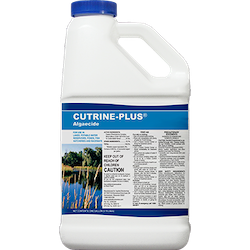
However, simply spraying with a liquid copper product may not work and can often kill only the top portions of an algae mat. Strong jets used with mixing tanks on boats with the spraying power of your garden hose work well to inject the copper deep into the mats and break apart the algae for a complete kill. Liquid copper becomes diluted as soon as it is touches the water.
That’s why Sepro’s Captain XTR would be the best choice for most stubborn algae. Their formulation adds a sticky substance called a tacifier or surfactant. This gives the copper the ability to last longer and penetrate into the algae cells for best kill available on the market today.
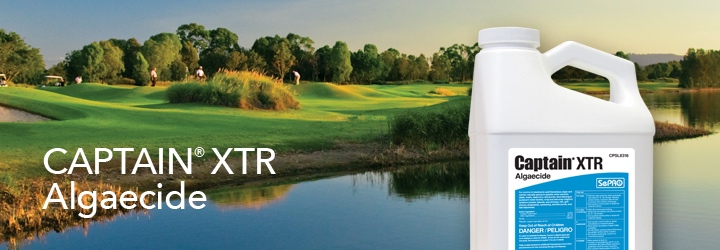
Copper sulfate is most efficient in water temperatures of 60°F or higher. However, we use discretion with this control method because high concentrations are toxic to fish and food organisms.
Got fish? If there are fish in the pond and the algae and aquatic plants cover a pond suddenly, copper treatment is not advisable. The treatment will likely cause a sudden, algal die-off causing an oxygen depletion that could result and the dead algae decay and the fish will suffocate. Treating only one third of an area at over 48-72 hours will help avoid crashing your oxygen levels.
Have you ever wondered what gets rid of algae in your pond or lake? There are a few things, but Copper Sulfate is the most used, and the most economical algae control available. Copper sulfate (or Copper Sulphate) is an artificial compound that combines sulfur with copper. It’s made up of bright blue crystals (once known as Blue Vitriol or Bluestone) that dissolve in water.
Don’t let its beautiful color fool you; it can be toxic depending on the copper content. It’s usually only harmful if it’s consumed in large doses. So if it gets on your skin before it’s diluted, just make sure you wash it off very well. The toxicity is what kills the bacteria, algae, roots, plants, snails, and fungi.
Become a member today so we could make sure your pond or lake stays healthy and beautiful.
Other Ways to Apply Copper Sulfate
By Spraying Solution on Water Surface: You dissolve the minimum required dose of in water and spray the solution evenly over the pond or lake.
By Broadcasting: Dry Copper Sulfate can be distributed on the water surface by a properly equipped boat. An air blower can be used to blow these crystals over the surface of the pond. When applying, the wind direction is an essential factor.
By Injection in Water: A solution can be made with Copper Sulfate that can be injected into the water via a weighted tubing.
Determining How Much Copper Sulfate to Use
So, how do you figure out the right amount of copper sulfate for your pond? The rate isn’t just a guess—it’s actually calculated based on your pond’s total alkalinity and size. Here’s how it works:
First, you’ll need to know your water’s total alkalinity—this value is usually measured in ppm (parts per million). Next, grab your pond’s dimensions. You’ll need the surface area in square feet and the average depth to get the total volume in acre-feet.
The amount of copper sulfate you’ll use is typically based on a formula that takes both alkalinity and pond volume into account. Generally, the higher the alkalinity, the higher the safe dose. For most applications, you’ll multiply your total alkalinity (divided by 100) by a standard rate of copper sulfate per acre-foot of water. Don’t worry if math isn’t your favorite subject—a quick call to your local pond care professional or a glance at the product label can help you nail the right rate without risking over-application. This ensures you get effective algae control while keeping your pond’s ecosystem (and its fishy residents) safe.
Combining Copper Sulfate With Other Algae Control Strategies
While copper sulfate can certainly do some heavy lifting when it comes to knocking out algae, getting your pond or lake back in balance often requires a combination of approaches for the long haul. Here are a few techniques our clients have found effective when paired with copper treatments:
Limit Nutrient Runoff: Algae thrive on nutrients—especially phosphorus and nitrogen—that sneak in from fertilized lawns, gardens, livestock, or even old septic systems. Consider reducing fertilizer use around your water’s edge, relocating livestock, or getting your septic checked out. Keeping excess nutrients out is like cutting off algae’s buffet line.
Add Aquatic Dyes: These create a shade barrier in the water, which discourages submerged plants and algae from growing by limiting sunlight. Aquatic dyes are common in golf course ponds and need to be reapplied every so often, especially after large rain events or overflows. Just keep in mind, dyes can make your water take on a unique hue, and in some cases, may impact food sources for your fish.
Drain and Dry Out the Pond: If you’re dealing with a particularly old pond, you might have a thick, mucky layer that’s feeding your algae problem. Draining the pond and letting that bottom layer dry out breaks it down and helps release built-up nutrients, cutting back future blooms.
Encourage Growth of Higher Aquatic Plants: Sometimes, overusing herbicides or drastic water drawdowns can wipe out the plants you actually want—those with stems and leaves that compete with algae for light and nutrients. Helping these “higher” plants reestablish can naturally outcompete nuisance algae, keeping things in check without letting the pond turn into a green soup.
Every pond is a little different, so it’s always wise to tailor these practices to your own unique situation. Combining copper treatments with one or more of the above strategies generally leads to healthier, clearer water and fewer headaches down the road.
What Does Copper Sulfate Actually Control?
Copper sulfate is a go-to solution for most algae problems, but not a fix-all for every plant in your pond. Here’s the scoop:
Targets: Copper sulfate is most effective at dealing with algae—both the mat-forming strands (filamentous algae) and the green-green pea soup varieties (planktonic algae). If you’re waking up to a green-tinted pond or “cotton candy” mats floating along the surface, copper sulfate will put in the work.
What It Doesn’t Tackle: When it comes to rooted aquatic weeds (think: submerged plants like coontail, milfoil, or pondweed), copper sulfate doesn’t have much effect. It’s meant for true algae, not the weeds with stems or leaves rooted in the muck.
Always make sure you know what you’re dealing with before you treat. Using copper sulfate on the wrong target wastes time—and can stress your pond’s ecosystem without solving your problem.
Effectiveness of Copper Sulfate for Long-Term Algae Control
While copper sulfate is widely used for managing algae due to its affordability, it’s important to know that it tends to offer only a short-term fix. Algae—especially pond varieties like filamentous and planktonic strains—are quick to rebound and can return soon after treatment if copper sulfate is relied upon as the only method.
For those seeking ongoing results, copper sulfate really shines when paired with other pond management strategies. Otherwise, you may find yourself reapplying more often than you’d like, as the algae can recover and become problematic again. With ponds, the goal should always be to address underlying issues—not just treat the symptoms—to keep your water clear and healthy in the long run.
SUMMARY
- Low cost
- Needs to be managed by a professional due to it being hazardous
- Copper sulphate is the most widely used, and most economical algae control available
- It can kill algae, bacteria, roots, plants, snails, and fungi
- If too much is used, it can deplete oxygen leading to fish kill
- It is both an effective algicide and a parasite treatment
- Copper sulphate is most beneficial in water temperatures of 60°F or higher
- Do not use in koi or trout ponds
- Use in swimming pools for a 90 day algae treatments
Fun Facts
(Disclaimer: we have not tried these and we do not condone the use of copper sulfate in these ways. They are for historical and entertainment purposes.)
- Has been used as a cure for warts
- Has been used as toothache relief
- Has been used for athlete’s foot or tinea
- Has been used for toenail fungus
- Has been used for canker Sores
Now serving Greenville SC, Spartanburg SC, Asheville NC, & Charlotte NC areas.
Get started. And become a member today!
Not in our service area? Schedule a 30 min phone consultation for only $99 anywhere outside of our service area in the U.S.A.


